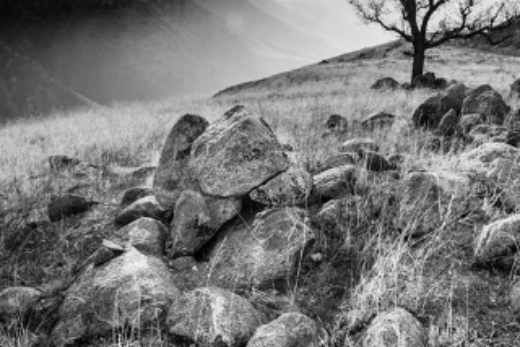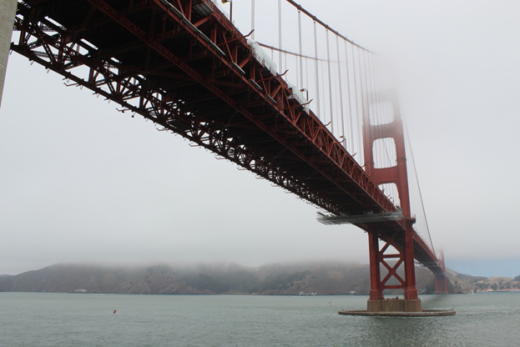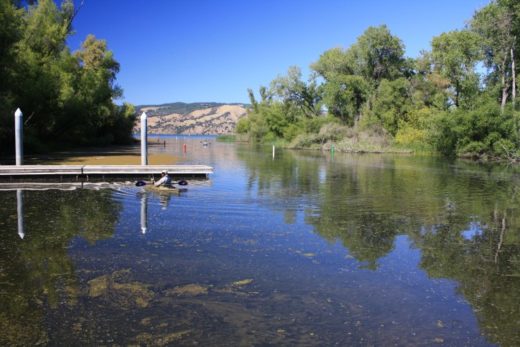Every year or so, we attempt to compare and contrast a place on our Earth that is distant and different from California. In each case, as we examine these seemingly disparate places more closely, we recognize how complex natural and human systems and cycles tie us together in ways that may not be apparent on the surface. Such is the case here as we dare to compare Norway to California. As usual, you are encouraged to do your own comparing and contrasting and either critique this as yet another geography exercise gone too far, or another window that opens into a world of connected threads and discoveries that bind us all together on this third rock from the sun.

Surface travel from California will require navigating down the coast to get around the North American Continent even if you use the Panama Canal. From there, you will have to sail more than 5,000 miles across the Atlantic Ocean and at least 50 degrees of latitude. Even the direct flight over southern Greenland is about 5,000 miles (~8,000 km). Norway’s southernmost locations are at least 16 degrees north of northern California and that may be the most notable difference that has influenced the natural and human landscapes and cultures of these two places.

But they are also similar in surprising ways. They are both elongated north-south, draped across a range of climate zones (warmer south and colder north, milder west coast and harsher east) and landscapes that have helped diversify their natural and human histories. Norway wins this latitude competition, stretching more than 14 degrees north-south, compared to California’s 9.5 degrees. Norway also covers more longitude (more than 25 degrees versus 10 degrees for California), though the distance difference isn’t as great as it may first seem since the length of a degree of longitude is a lot less in Norway, as it is so much closer to the pole, where lines of longitude converge. Though Norway is only a little smaller than California in total area, its population is just more than 5 million, compared to California’s approximately 40 million. This leaves Norway with more open space even when compared to the Golden State’s sprawling natural landscapes.

California’s coastline is famously jagged, but Norway’s coastline is so rugged and frequently interrupted with fjords and dotted with islands, it totals tens of thousands of miles, much longer than the Golden State’s cherished coast. We know that California’s coast is cooled by powerful ocean currents as waters generally drift from north to south (the California Current) and those mild climates gradually disappear as we move inland. But Norway’s coast is also milder than might be expected for its latitude, thanks to the south to north drift of the North Atlantic Current (or Gulf Stream) to become what researchers know as the Norwegian Atlantic Current. These relatively warm waters release tremendous amounts of heat into an otherwise colder latitude. And similar to California, prevailing west winds push Norway’s milder coastal air masses inland until climates gradually become more harsh to the east. Of course, the big difference is that because Norway is so far north, heavy snow and ice may dominate landscapes into spring, especially as you attempt to travel north or to just slightly higher elevations.

And so we begin to understand why glacial landscapes (the focus of this essay) in the two places are so different and yet similar. Enormous glaciers dominated Ice Age Norway, leaving spectacular glacial topography throughout the country, especially to the north, and impressive active glaciers are still evident at northern and higher elevation locations. But in California, only a necessary combination of extensive lofty mountain ranges could catch enough moisture and freeze it long enough to support glaciers during the Ice Age, leaving more isolated examples of alpine glacial geomorphology. And though active glaciers are still commonly seen shaping mountain landscapes in Norway and only a few smaller ones remain isolated in California’s high country, glaciers are retreating in both places.

It was Louis Agassiz in the mid-1800s who cleverly theorized that large glaciers shaped many mountain ranges on Earth. Clarence King of the U.S. Geological Survey in 1870 was first to document glaciers in California (on Mt. Shasta). And in October 1871, John Muir discovered and measured glaciers in Yosemite’s high country and then wrote about them; his discoveries were followed by 60 years of ridicule, until scientists confirmed that impressive glaciers had not only once carved Sierra Nevada landscapes, but that several small glaciers remained active there. Though the Golden State’s glaciers and the landscapes they left behind could never compete with Norway, there are similarities.

In both regions, the spectacular glacial landscapes that remain are admired for their unique natural beauty. The relatively small glaciers are important sources for summer runoff into lower elevations and plant communities. They and their runoff produce unique microclimates that have formed around the ice and the frigid meltwater that flows from them. More recently, as the glaciers and ice fields retreat, they are all helping us measure the accelerating rate of climate change that is impacting all landscapes, plants, and animals in these two regions that are thousands of miles apart. Todays’ pinnacles and sun cups remaining in the ice fields and small glaciers that are scattered northward from Mineral King’s peaks into northern California’s highest elevations are tiny samples that remain to temp us to imagine a landscape where great alpine (mountain-valley) glaciers more common to today’s Norway once carved parts of the Golden State.

Look for spectacular erosional features such as isolated sharp-edged pyramidal peaks called horns, saw-toothed arêtes, bowl-shaped amphitheaters called cirques sheltering their crystal tarns of meltwater, and tributary hanging valleys and waterfalls that plunge into deeper, U-shaped valleys once carved by more massive glaciers. You might even notice grooves and striations on the exposed granites that were carved by coarser imbedded material dragged with the glaciers and polish left by finer material as it scoured its way downhill. Glacial till carved from above was deposited downstream in the form of jumbled contours of lateral, medial, and terminal moraines that may still block and pool today’s runoff from the high country. You can explore these landscapes that may seem more Norwegian in California’s high country, from the Sierra Nevada up to Shasta and even farther west in the Klamath’s Trinity Alps. But you will never find fiords in California, as our glaciers were never large enough to carve down near sea level or to the coast.

We hope you enjoy the following images in this daring attempt to compare and contrast Norway and California glacial landscapes.


























